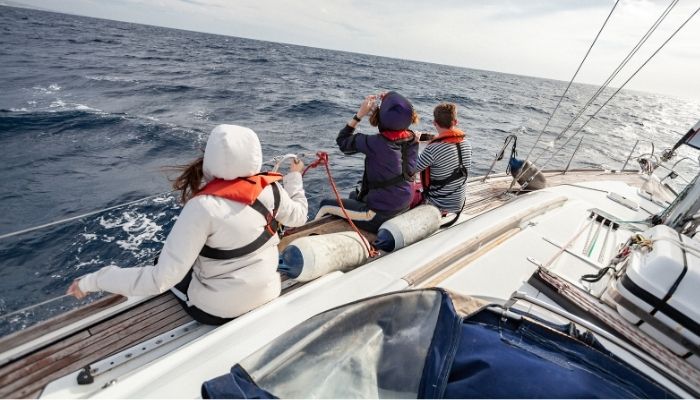Owning a boat provides a unique opportunity to embrace the great outdoors while creating lasting memories with friends and family. However, you don’t have to limit the joy of cruising on the water to the warmer months. As we transition into the early fall, the changing season presents its unique appeal for boating enthusiasts. Cooler temperatures often mean fewer crowds, and for those interested in fishing, certain species are more abundant during this time. However, these cold and wet weather conditions also present their set of challenges; the following boating tips are the ultimate solutions for these problems.
Bring Plenty of Layers
Maintaining body warmth is crucial when boating in cold and wet weather, as over-exposure to the elements in soaking clothing can lead to potentially life-threatening hypothermia. Therefore, you must prepare an adequate, multi-layer outfit for your day on the water. Start with a moisture-wicking base layer to keep your skin dry. Add an insulating middle layer, such as fleece or wool, to retain heat, followed by a waterproof outer layer to protect against rain and spray. Fabrics like Gore-Tex are excellent choices for the outer layer due to their water-repelling properties while maintaining breathability. Always pack extra clothing in a dry bag as a precautionary measure. Wearing a wetsuit can provide additional protection by preserving body heat, even when immersed in cold water, for those venturing into extreme weather conditions.
Prepare for the Weather
Not adequately preparing for the weather is one of the biggest boating mistakes a skipper can make before setting off, so it’s crucial you don’t miss these vital steps. First and foremost, check over your boat and ensure it is in optimal condition, both performance-wise and structurally. A well-maintained boat is more likely to withstand adverse weather conditions, reducing the risk of accidents or emergencies.
Researching the weather conditions ahead of time is another vital element of safe boating. A thorough understanding of the forecast will allow you to plan your trip effectively, considering potential weather changes. Weather apps and marine forecasts are useful tools for this purpose, offering real-time updates and predictions. It is also advisable to keep an eye on the sky and sea conditions throughout your journey, as the weather can change rapidly. Finally, always prepare for the possibility of ending your trip early if conditions worsen.
Safety Considerations
Before you embark on a journey in cold and wet weather conditions, it is crucial to consider several safety measures. First, ensure you pack the proper emergency communication devices, such as a VHF radio or a personal locator beacon. These devices can be lifesavers in case of an emergency, enabling you to call for help even in remote areas. In addition to these devices, we highly recommend that you inform someone about your boating plans. Let them know your intended route, expected return time, and any stops you plan to make. Finally, do not overlook the importance of a well-stocked first aid kit. It should contain bandages, antiseptic wipes, tweezers, medical tape, pain relievers, and any necessary prescription medications.
Ultimately, proper clothing layers, a well-maintained vessel, a careful eye on the weather forecast, and a comprehensive safety plan can make the difference between a delightful adventure and a dangerous excursion. Follow these boating tips to ensure smoother and more successful experiences in wet and cold weather conditions.







